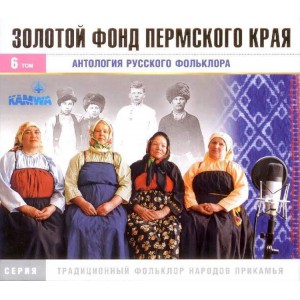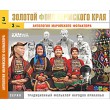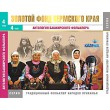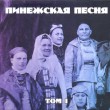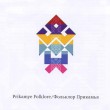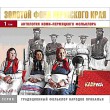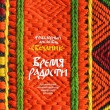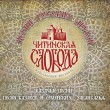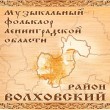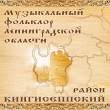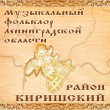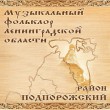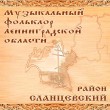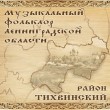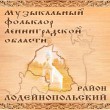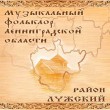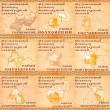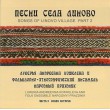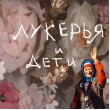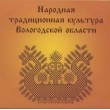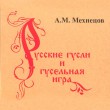The series "The Golden Fund of the Perm region" - Anthology of Russian folklore. vol. 6
Anthology of Russian folklore
Russian - one of the many peoples of Northern Eurasia and Russia. The total number of Russian in the world - about 150 million people, including more than 111 million lives in Russia. According to the census in 2010 in the Perm region identified themselves as Russian 2,191,423 people. Russian language belongs to the East Slavic group of the Slavic branch of Indo-European language family. Most believers - Orthodox Christians. Kama Land were known Russian since the eleventh century. The population of the region began in the Russian Upper Kama River in the late XV - early XVI century. From the sixteenth century. the process of developing Riverlands Chusovaya, Sylva, Iren Tulve. In the middle of the XVII century. Kama took a wave of migration associated with a church schism. In the XVIII century. influx of new population was due to the advent of the Middle Urals plants and plant communities. The nineteenth century - the period of active development of the southern districts of the region. The main flow of migration to the Russian Kama went to the European North, so the language and folk culture of Russian Perm region mostly tend to severorusskoy tradition. In the south of the region marked by immigrants from Vyatka, Kama and Lower Volga region.
Russian folklore Kama
Kama has always been the richest treasury of folklore. Russian folk tradition of the edge of different variety of poetry, prose and music genres. The region is portrayed in prose genres of folklore: stories, legends, fairy tales. A rich reservoir of folk art are small genres zaklichki, sentences, riddles, proverbs and sayings. As a result of interactions with other ethnic environment in the harsh nature of the region, the Urals, there was a kind of revival of mythological traditions. In the Kama highly developed genre bylichek, short stories, often telling us about the mythological characters - the spirits of nature and buildings. Still debatable on the existence in the Kama epics. Despite the fact that complete and detailed records epics was not done, the individual texts, excerpts of plots allow folklorists argue that the tradition of epics in the Kama existed. From the epic song genre known as historical songs and ballads. Very popular in the national environment lyrical, romantic, family, soldiers, and the robber yamschitskie songs. Believers have a proliferation of Kama existed and actively religious poems, the main theme of which correlated with the subjects of the Old and New Testament, apocryphal tales and legends. Late in the genre of traditional folk ditty should be considered. Most of the stories is a love ditties, welfare, social and historical content. Sometimes jingles are included in the context of the ritual: the wires are confined to the soldiers - recruits, for the Easter entertainment on a swing - kachulnye, etc. The widespread folklore texts are included in the family and calendar rituals. There are texts in the Kama Christmas carols and grapes, oil songs. One of the characteristics of the ritual calendar of folklore - tightness of the texts of more recent origin (lyrical songs, songs) for festive and ceremonial cycle. Round dance songs - circular, prairie, kruzhalnye, spring - usually performed during the period from the Ascension to Trinity Shrovetide. Execution of gaming and round dance songs of winter - winter, Christmas - was associated with a period of Christmas holidays. Among the genres of poetry associated with family rituals, you can select songs and recruiting laments. The most detailed and varied repertory is represented in a wedding ceremony: lamentations, songs, accompanying and commenting ritual situation, Cheering and korilnye. Performance is typical of laments and funeral and memorial Kama ritual. The most common musical instrument in the Perm region in the early twentieth century. was the accordion, it has become especially popular in areas close to the factory and urban centers. Predominantly female tool was considered a balalaika. The repertoire of tunes in the repertoire of balalaika tunes are often repeated on the accordion. Known in the Kama region and some of the more archaic musical instruments such as violin, folk - a dial tone. In some areas, has been known for diamonds, it is often considered a "levy" instrument and has been associated with festivals recruits. In the northern parts of Kama played shepherd horns and trumpets. Collected in an anthology of texts written by folk ensembles and artists in the Russian villages Vereschaginskiy, Kuedinskogo, Sivinskogo, Uinskogo, Chernushinskogo, Yurlinskogo districts of Perm Krai. They give an idea of the diversity and characteristics of traditional folklore Russian Perm Perm, about the features of the Permian dialect, imagery and symbolism of folklore texts.
1 Fair maidens came to a nice meadow Trushniki village ensemble, Chernushinsky district.
2 Vanka, my soul mate Faina Kochkina (born 1949), Sepych, Vereshchaginsky district
3 I’m sitting alone on a bench in sorrow Voznesenskoye village ensemble, Vereshchaginsky district
4 Downhill a dale Dubovaya Gora village ensemble, Kuyedinsky district.
5 Gordyona Vaskovo village ensemble, Yurlinsky district.
6 Today is the last wonderful day Anatoly Belousov (born 1941), Shermeyka, Bardymsky district.
7 Once behind the river Trushniki village ensemble, Chernushinsky district.
8 The river Volga is itself so long Tatyana Kulizhnikova (born 1941), Yeloga, Yurlinsky district.
9 Birch tree in Aleksandrovsk Bub village ensemble, Sivinsky district.
10 I will go for sieve to Sidor Pozh village ensemble, Yurlinsky district.
11 Sat Mashenka on a bench Nina Pastukhova (born 1931), Urtalga, Kuyedinsky disrict.
12 Lullaby Tamara Burtseva (born 1931), Voskresenskoye, Uinsky district.
13 Once Chechyotka walked Kalinovka village ensemble, Chernushensky district.
14 Christmas has come, girls Verkhneye Lobanovo village ensemble, Yurlinsky area.
15 As in the first time Pozh village ensemble, Yurlinsky district.
16 In the dining-room of a new gorenka Yevdokiya Petukhova (born 1925), Aspa, Uinsky district.
17 It was Christmas, Epiphany Bub village ensemble, Sivinsky district.
18 There sits Dryoma Bub village ensemble, Sivinsky district.
19 Once from the Don, from the Donochek Trushniki village ensemble, Chernushinsky district.
20 My father was gifted in ploughing Sepych village ensemble, Vereshchaginsky district
21 Once at the gates of the tsar and boyars Mariya Zubareva (born 1917), Nina Zasukhina (born 1942), Kalinovka, Chernushensky district
22 A mother scolded at her daughter Anfisa Bobrova (born 1932), Marina Bobrova (born 1928), Dubovaya Gora, Kuyedinsky district.
23 I am young and I have got Mariya Zubareva (born 1917), Kalinovka, Chernushensky district.
24 In the evening I planted seeds of cabbage Trushniki village ensemble, Chernushinsky district.
25 Zhivalko-Byvalko Yevdokiya Petukhova (born 1925), Aspa, Uinsky district.
26 Once granddad Pyotr Bub village ensemble, Sivinsky district.
27 There at the gates of the Pavlovs Dubovaya Gora village ensemble, Kuyedinsky district.
28 I refuse to go, and I refuse to start Trushniki village ensemble, Chernushinsky district.
29 On the island in the Kama river Bub village ensemble, Sivinsky district.


